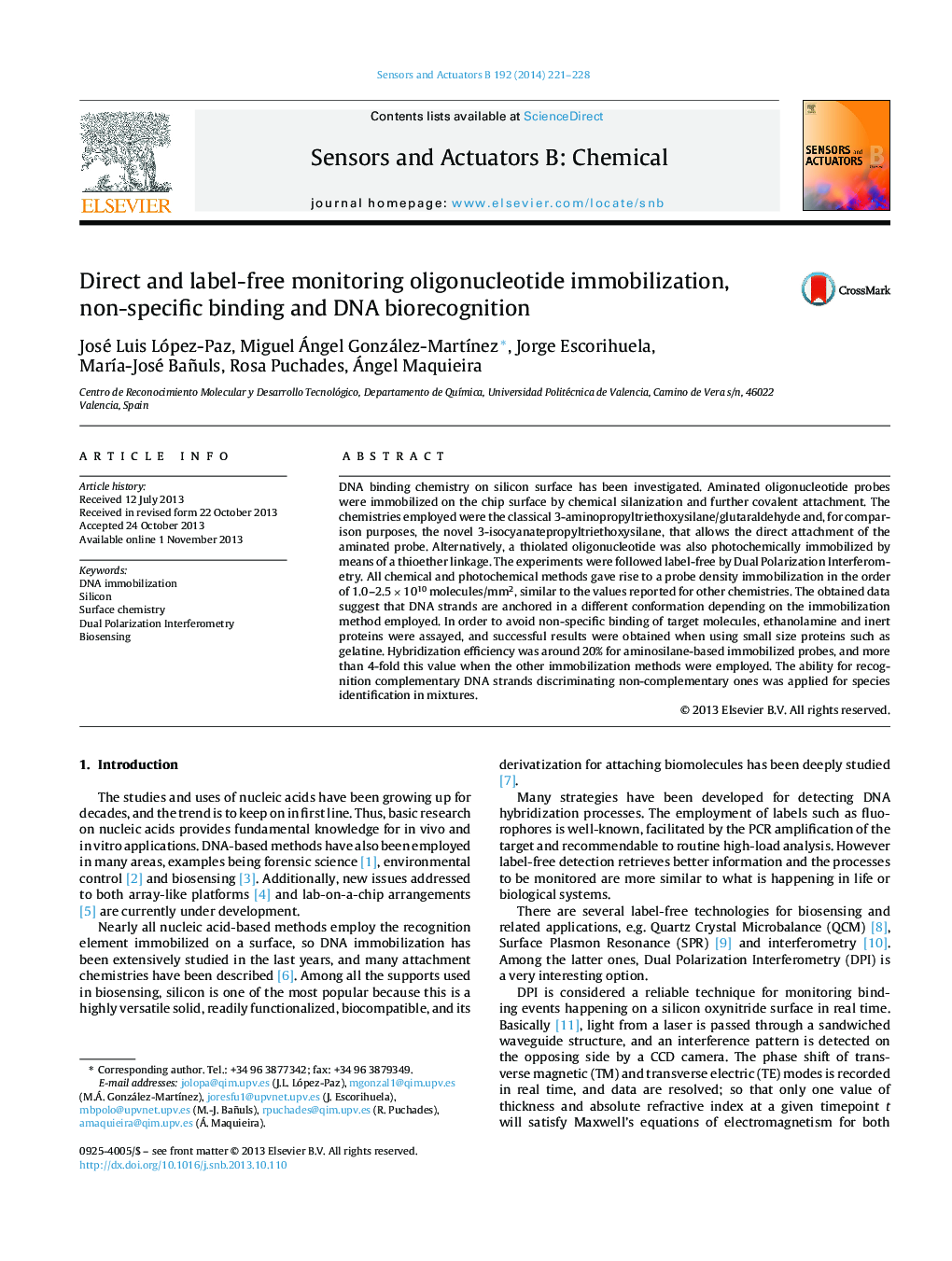| Article ID | Journal | Published Year | Pages | File Type |
|---|---|---|---|---|
| 7147386 | Sensors and Actuators B: Chemical | 2014 | 8 Pages |
Abstract
DNA binding chemistry on silicon surface has been investigated. Aminated oligonucleotide probes were immobilized on the chip surface by chemical silanization and further covalent attachment. The chemistries employed were the classical 3-aminopropyltriethoxysilane/glutaraldehyde and, for comparison purposes, the novel 3-isocyanatepropyltriethoxysilane, that allows the direct attachment of the aminated probe. Alternatively, a thiolated oligonucleotide was also photochemically immobilized by means of a thioether linkage. The experiments were followed label-free by Dual Polarization Interferometry. All chemical and photochemical methods gave rise to a probe density immobilization in the order of 1.0-2.5Â ÃÂ 1010Â molecules/mm2, similar to the values reported for other chemistries. The obtained data suggest that DNA strands are anchored in a different conformation depending on the immobilization method employed. In order to avoid non-specific binding of target molecules, ethanolamine and inert proteins were assayed, and successful results were obtained when using small size proteins such as gelatine. Hybridization efficiency was around 20% for aminosilane-based immobilized probes, and more than 4-fold this value when the other immobilization methods were employed. The ability for recognition complementary DNA strands discriminating non-complementary ones was applied for species identification in mixtures.
Related Topics
Physical Sciences and Engineering
Chemistry
Analytical Chemistry
Authors
José Luis López-Paz, Miguel Ángel González-MartÃnez, Jorge Escorihuela, MarÃa-José Bañuls, Rosa Puchades, Ángel Maquieira,
